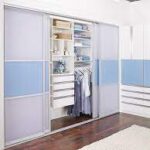One of the most important and often used rooms in any house is the bathroom. It should be a comfortable and convenient space for everyone and serves a variety of purposes, including relaxation and personal hygiene. But not every bathroom is made to be accessible, which can be problematic for people who have trouble moving around or who are disabled. Here’s where universal design principles come into play, making bathrooms usable and accessible to everyone. This guide will address the significance of universal design and accessibility in bathrooms and offer insightful advice on how to design a room that can serve a range of needs.
Recognizing Universal Design and Accessibility:
It’s important to grasp the ideas of accessibility and universal design before getting into the specifics of bathroom design.
- The degree to which a place, item, or service is usable by people with disabilities is referred to as accessibility. When it comes to restrooms, accessibility refers to how well-designed the area is to suit users of different types of mobility assistance, such as wheelchairs, walkers, or other similar devices.
- By striving to create environments, goods, or services that are useable by the greatest number of people, regardless of age, size, or ability, universal design goes beyond accessibility. Designing inclusively from the beginning aims to do away with the need for extra accommodations or changes.
The Significance of Accessibility in the Lavatory
The restroom is a frequently used space that poses particular difficulties for people with disabilities or mobility impairments. The following are some of the main reasons that accessibility in the restroom is crucial:
- Safety: Individuals with restricted mobility may find bathrooms dangerous. Erroneous transitions, slick surfaces, and badly thought out fixtures can cause mishaps and injuries. Accessible restrooms put safety first and lower the chance of falls.
- Independence: People with disabilities can stay independent thanks to accessible restrooms. People’s quality of life can be improved by enabling them to carry out basic tasks without assistance through the use of appropriate design features and equipment.
- Inclusivity: Regardless of their physical capabilities, every member of the household or visitor should feel at ease and welcomed in the restroom. Equal access and inclusivity are encouraged by accessible restrooms.
- Aging in Place: People may become less mobile as they get older. Seniors can age in place and stay in their homes rather than moving into assisted living facilities by having an accessible bathroom.
Important Components of a Universally Designed and Accessible Bathroom:
Now that the significance of accessibility and universal design has been established, let’s examine the essential components that can enable a bathroom to be inclusive for all users:
- Zero-Threshold Entry: Remove all stairways and barricades at the restroom door. Wheelchair users can transition seamlessly and there is less chance of tripping thanks to a zero-threshold entry.
- Wider Doorways: Make sure that doorways are sufficiently wide to comfortably fit wheelchairs and other mobility assistance. It is advised to have a minimum width of 36 inches.
- Accessible Sink: Installing a sink that is roll-under designed will make it easier for wheelchair users to access it. Lever-handle faucets are simpler to use, but wall-mounted sinks offer clearance beneath.
- Grab Bars: Install grab bars in the shower or bathtub area and next to the toilet. For those who struggle with mobility, these bars offer support and stability.
- Roll-In Shower: Take into consideration a curbless roll-in shower. For everyone’s convenience and comfort, there is a handheld showerhead and an integrated bench.
- Adjustable Showerheads: Install showerheads with adjustable heights so that users with different statures and abilities can be served.
- Non-Slip Flooring: To lower the chance of slips and falls, use non-slip flooring materials in the bathroom. The best choices are textured tiles or coatings that resist slippage.
- Enough Room for Manoeuvre: Make sure the restroom has enough room for people to move around, especially those who use wheelchairs. A sufficient turning radius is necessary.
- Accessible Toilet: Install a comfort-height toilet with grab bars close by to make it accessible. For added convenience, consider adding an elevated toilet seat.
- Easy-to-Reach Storage: Provide storage options that are accessible to all. Pull-out drawers and movable shelving can increase accessibility.
- Good Lighting: Safety and visibility depend on having the right lighting. To create a well-lit area, combine task, ambient, and accent lighting.
- Use Contrasting Colors: To help people with vision impairments navigate and get around, use contrasting colors for flooring, walls, and fixtures.
- Mirrors: Mirrors that are accessible should be positioned at different heights to accommodate users of different statures, including wheelchair users.
- Lever Handles: These are simpler to use and more convenient than traditional doorknobs and faucet handles, especially for those with weak hands.
- Emergency Response: In the event that assistance is required in the restroom, think about installing an emergency call or alert system.
Creating Future-Proof Designs:
It’s critical to consider the long term when designing an accessible and universally designed bathroom. Creating a space that can adjust to shifting needs and capabilities is part of designing for the future. The following advice will help you future-proof your bathroom:
- Flexibility: Select fixtures and features that are easily adapted to changing circumstances. This includes movable cabinets, adjustable grab bars, and showerheads that can be adjusted.
- Large Door Frames: Even if mobility aids are not required at the moment, make sure that door frames are large enough to accept them in the future.
- Shower Design: Choose a barrier-free shower that is able to take a wheelchair or shower chair if needed.
- Transitional Spaces: Create transitional areas in the bathroom where a wheelchair or other mobility aid can be put away or temporarily parked.
- Speak with Experts: Work those who are knowledgeable about accessible design and who can offer advice on the best options for your particular requirements such as Decker Home Repairs.
In Summary:
In the bathroom, accessibility and universal design are about making a space that encourages inclusivity, safety, and independence rather than just following the rules. Whether you are designing a new bathroom or remodeling an existing one, following these guidelines will guarantee that your bathroom is a comfortable and useful area for all users. You can make your bathroom an oasis of comfort and convenience that is accessible to everyone by taking into account the various needs of users and making thoughtful design features investments, click here to learn more.





